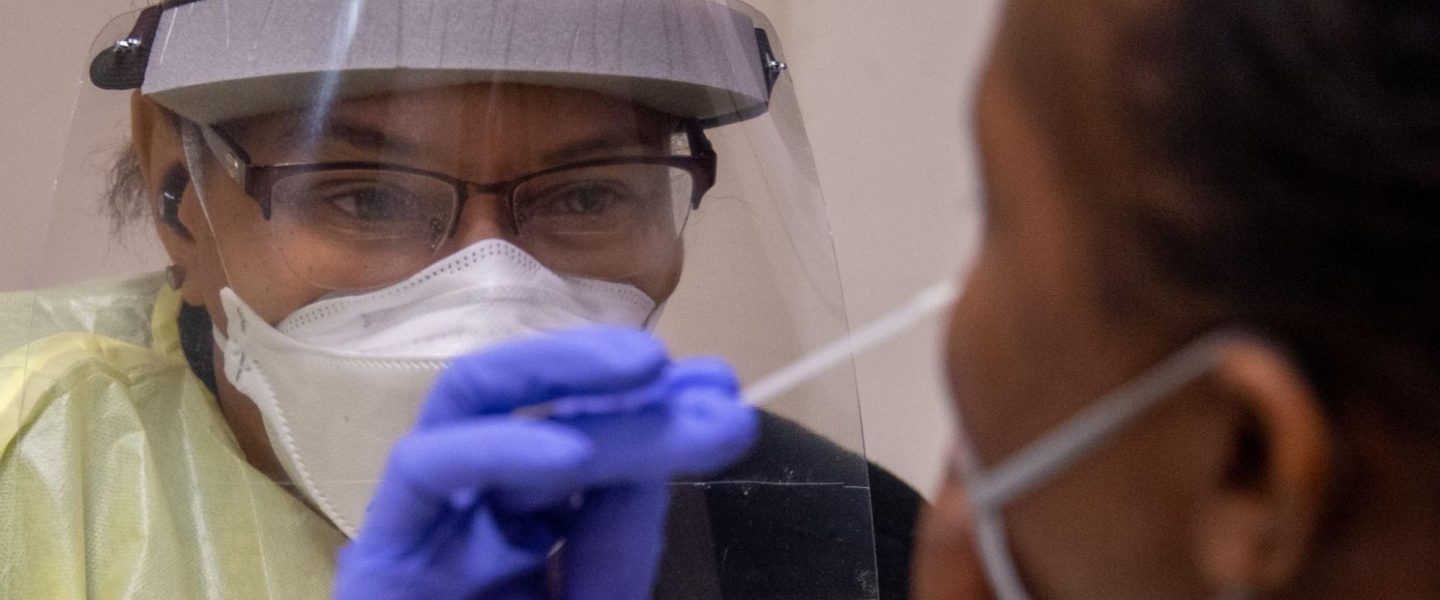Could omicron and long COVID help us rethink the mechanisms of mental and chronic illnesses?
It’s the new year, and the much more infectious, purportedly less severe omicron variant seems to be winning the game of hide and seek. In the face of what’s become a seemingly inevitable and “boring apocalypse,” attitudes toward COVID-19 are growing complacent and dangerously fatalistic. Many, including the diligently vaccinated and boosted, are entertaining pernicious questions like: “Should I just get omicron over with?”
However, weighed against the many unknowns that come with even a single COVID-19 infection — ranging from increased diabetes risk for children and teens to myriad neurological impacts and more (oh my) — the safest answer to such questions is a resounding “No.” Even those who have already been infected with COVID-19 are not well-protected from reinfection or worse side effects, including long COVID. In the face of these numerous risks, the scientific research focusing on defining what, exactly, happens to our brains and bodies in neuroinvasion (infection in the nervous system) and long COVID becomes infinitely more important. So, let’s dive into it.
It’s Not All in Your Head… Or Is It?
Until now, the most concerning COVID-19 symptoms have been largely physical, a laundry list of the usual suspects — fever, chills, cough, fatigue, body aches, runny nose, sore throat, etc. — with the worst-case scenarios being intubation and death. Infection with omicron is forcing us to contemplate a different beast entirely: a neuropsychiatric barrage of symptoms that are hard to quantify or even disentangle from the pressures of living through two years of pandemic stress.
Neurological symptoms have been reported alongside the spread of COVID-19 since the beginning of the pandemic. As omicron spreads, more accounts are emerging of “brain fog,” “chemo brain,” aphasia (being at a loss for words), and sudden depression or anxiety. Preliminary research in mice shows that coronavirus infection causes a noticeable decrease in the generation of new neurons in the hippocampus, a brain area associated with memory formation and storage.
A clarifying description of COVID-19 brain fog, published by Bangor University in the UK, reads: “Decisions as seemingly simple as having tea or coffee to drink can throw some individuals, while others can have difficulties with short- or long-term memory.”
A University of Alabama Birmingham neurologist adds, “Patients oftentimes describe difficulty with attention, focus, just not feeling right, not as sharp as they have otherwise been. We sometimes see these symptoms in many other conditions, during post-concussion, and we also see them after various other infections too.”

These reports encourage us to rethink the supposed “mildness” of omicron, in comparison to previous COVID-19 variants. Preliminary studies of human tissue samples and rodents show that omicron preferentially infects upper airway tissues over the lungs. For instance, omicron was found in another preliminary study to replicate much more efficiently in bronchial tissue than in the rest of the lung (possibly due to the presence of a receptor with less affinity for omicron). This provides one explanation for the apparently reduced physical severity of omicron infections, but also the daunting possibility that greater concentrations of omicron in the throat, mouth, and nose areas may equate to higher chances of neuroinvasion through the olfactory nerve. While this theory is viewed as unlikely by some researchers, a dearth of data and the too-frequent appearance of new COVID-19 variants complicate understanding of the exact pathways of neuroinvasion.
Even if the biological explanation for omicron and long COVID’s abilities to cause psychiatric distress for patients is still unknown, it is important to establish a link between the virus and these nebulous accounts of sudden anxiety, depression, and brain fog. The possibility that omicron may induce communicable depression represents an opportunity to glean new information about the mechanisms and treatments of general depression.
In the context of long COVID, a post-coronavirus condition which may last up to many months after initial infection, increased attention to mental health is critical. In a review in the Journal of Medical Virology, researchers found that “the majority of COVID-19 patients post-recovery have a poor quality of life, posing challenges to patients, healthcare providers, and public health practitioners,” citing the prominence of PTSD, sleep disturbances, and other mental health issues. The infection may be over, but symptoms that never abate, or that sprout up anew, leave many patients in a purgatory of COVID-19 aftereffects.
Uno, Dose, Tres: A Fourth Shot?
In late December, Israel started testing the administration of a fourth dose of Pfizer’s vaccine to medical personnel. As of January 3, Israel began distributing fourth doses to adults over 60, medical workers, and vulnerable groups after finding antibody concentrations increased fivefold with a fourth dose. Germany is planning to do the same, but the UK and the US are withholding their decisions until more data is available.
Most countries, including the UK and the US, are offering fourth doses to immunocompromised populations since their immune responses to the vaccine are often much diminished or incomparable with those of healthy groups.
Currently, all teens and most children are eligible for Pfizer’s vaccine. Teens ages 12 and up are authorized for the COVID-19 booster shot, as are immunocompromised children ages 5 and older. Children 11 and under can get the Pfizer vaccine but are not yet cleared for booster doses. Because kids have a generally stronger immune response to vaccines, they are given a lower dose of initial vaccination than adults, and the data on whether and when they might need a booster is still unclear.
Good Things Take Time
After a scramble with national and international shortages, COVID-19 rapid antigen tests are now available for ordering online. Despite the abundance of misgivings about the accuracy of rapid tests, which are only about 70 percent to 90 percent accurate in detecting infection in symptomatic individuals (compared to 97.2 percent accuracy with PCR tests), many experts say that more accessible and frequent rapid testing will help us take proper precautions after infection to protect ourselves and those around us. When used correctly — that is, in the right time frame and ideally serially — they prove a vital tool that may be on par with PCR testing and are cheaper and not reliant on laboratory equipment.
On the treatment side of things, as of January 14, the WHO is recommending two new drugs, baricitinib and, conditionally, sotrovimab, for patients with severe COVID-19 infections or those at high risk of hospitalization.
Published on January 13, a revolutionary study on the long-term effects of infection with the Epstein-Barr virus (EBV) may shed light on our questions pertaining to long COVID-19. After all, COVID-19 is only the most recent in a long line of deadly viral illnesses to wreak havoc upon humanity. The EBV study found that people who have been previously infected by EBV had a 32-fold increased risk of developing multiple sclerosis (MS). Furthermore, the study noted that latent EBV was found not only to be a cause of MS but also a contributing factor to relapse and persistent inflammation. This type of research may help us understand the manifestations and interactions of long COVID-19, long past the pandemic.



